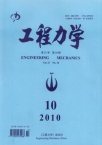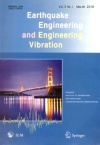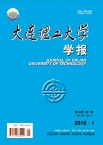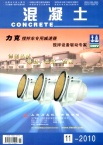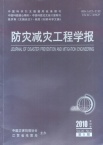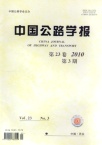学术论文列表
汶川大地震回澜立交桥震害分析
摘要:利用数值模拟结合现场调查分析了汶川大地震回澜立交桥破坏机理。地震时设有支座的最矮的1号桥墩支座发生滑移,以致刚度较大(次矮)的2号刚构桥墩承受很大的地震惯性力,发生弯曲屈服,此后随延性发展因抗剪能力不足最终发生剪切破坏,呈现典型的弯剪破坏特征。
工程软件在桥梁工程教学中的探索和应用
摘要:从应用型人才培养的需要出发,提出在桥梁工程本科教学中,将工程软件教学与桥梁理论授课相结合,在课程设计和毕业设计中分别加以实践,使学生熟练掌握桥梁专业软件的使用。通过桥梁工程课程体系和内容的合理规划找到理论教学与工程软件教学的结合点,在桥梁工程课程设计中以梁桥和拱桥计算为例,初步实现工程软件的应用,最后通过毕业设计环节,强化软件使用,使学生能够运用工程软件进行复杂的实际工程的计算分析。
Research on Amount of Confining Reinforcement in Potential Plastic Hinge Regions of RC Bridge Columns
摘要:In order to study the confining reinforcement requirement for ductile RC bridge columns, the code provisions of confining reinforcement in the potential plastic hinge regions of bridge columns in China, USA and Europe were summarized. Then, 234 pseudo-static test data for bridge columns were collected from Pacific Earthquake Engineering Research Center (PEER) column database, Kawashima Laboratory and other literatures in China. The relationships between the ultimate drift ratios and displacement ductility factors and curvature ductility factors of the columns were developed. The code provisions for the amount of confining reinforcement in bridge columns in China, USA and Europe were evaluated. Then, calculated equations of amount of confining reinforcement required to achieve a given ultimate drift ratios of 2% and 3% with 85% assurance rate were proposed based on regression analysis. Through a practical example, comparisons of equations in the paper and code at home and abroad were carried out. Results show that the proposed equations can be used for the bridge columns with aspect ratio 3 to 10 and can keep good seismic capacity for the columns under high axial load ratio but is not very conservative for the columns under low axial load ratio.
高强箍筋高强混凝土柱约束箍筋用量研究
摘要:为研究高强箍筋约束高强混凝土柱塑性铰区配箍要求,统计了国内外进行的98个矩形截面和11个圆形截面高强箍筋高强钢筋混凝土柱拟静力试验数据。分析了影响高强箍筋高强混凝土柱延性抗震能力的主要因素为配箍特征值、轴压比、纵筋配筋、混凝土保护层厚度等。在此基础上,通过回归分析分别以2%和3%极限位移角为延性目标,建议了具有85%保证率的高强箍筋高强混凝土柱塑性铰区约束箍筋用量计算公式及配箍构造措施,适用于混凝土轴心抗压强度在40MPa―110MPa之间,箍筋屈服强度在400MPa―800MPa之间,试验轴压比在0―0.6之间的高强箍筋高强混凝土柱。
Shake table test of soil-pile groups-bridge structure interaction in liquefiable ground
摘要:This paper describes a shake table test study on the seismic response of low-cap pile groups and a bridge structure in liquefiable ground.The soil profile,contained in a large-scale laminar shear box,consisted of a horizontally saturated sand layer overlaid with a silty clay layer,with the simulated low-cap pile groups embedded.The container was excited in three E1 Centra earthquake events of different levels.Test results indicate that excessive pore pressure(EPP) during slight shaking only slightly accumulated,and the accumulation mainly occurred during strong shaking.The EPP was gradually enhanced as the amplitude and duration of the input acceleration increased.The acceleration response of the sand was remarkably influenced by soil liquefaction.As soil liquefaction occurred,the peak sand displacement gradually lagged behind the input acceleration;meanwhile,the sand displacement exhibited an increasing effect on the bending moment of the pile,and acceleration responses of the pile and the sand layer gradually changed from decreasing to increasing in the vertical direction from the bottom to the top.A jump variation of the bending moment on the pile was observed near the soil interface in all three input earthquake events.It is thought that the shake table tests could provide the groundwork for further seismic performance studies of low-cap pile groups used in bridges located on liquefiable groun.
钢筋混凝土延性桥墩震后快速修复技术研究
摘要:采用3种不同修复方案对3个发生严重破坏的钢筋混凝土延性桥墩进行震后快速修复技术研究.试件首先在固定的轴力和侧向反复荷载下进行拟静力试验使之发生弯曲延性破坏,然后分别利用植筋、浇筑套箍、缠绕CFRP等方法对其进行快速修复并重新进行加载试验.试验结果表明,采用不同方案修复的桥墩承载力和延性指标均能得到较好恢复甚至提高,由于内部损伤的存在,修复后桥墩的初始刚度较低;缠绕CFRP修复的试件,由于施工简单,修复效果较好且造价较低,可在工程实际中推广.
高强箍筋约束高强混凝土柱在轴压下的力学性能研究综述
摘要:采用高强度箍筋约束高强混凝土柱以保证其延性是混凝土结构的重要发展方向,为研究高强箍筋约束高强混凝土柱在轴压下的力学性能,统计了国内外的研究情况并对结果进行总结分析,发现在高强箍筋约束作用下,高强混凝土的脆性减小,强度和延性增加。同时介绍了几种有代表性的约束混凝土模型,分析了影响高强箍筋约束高强混凝土柱的延性和强度的主要因素为混凝土强度、体积配箍率、箍筋屈服强度、箍筋间距、混凝土保护层、纵筋配筋率以及箍筋约束形式等,并对各影响因素的作用进行总结。
汶川大地震曲线梁桥震害及破坏机理分析
摘要:以汶川大地震中严重破坏的回澜立交桥为例,基于数值模拟手段并结合现场震害调查,分析了回澜立交桥的地震破坏机理。数值分析表明,地震时设有支座的最矮的1号桥墩支座发生滑移破坏,以致刚度较大(次矮)的2号刚构桥墩承受很大的地震惯性力,2号墩首先发生弯曲屈服,此后随延性发展因抗剪能力不足最终发生剪切破坏直至倒塌损毁,呈现典型的弯剪破坏特征。现场震害调查发现,回澜立交桥震害集中于抗弯刚度较大的刚构墩上,而其余桥墩震害相对较轻,主要表现为混凝土保护层的脱落、混凝土开裂以及墩顶支座的滑移破坏等。数值分析结果与震害调查呈现出较好的一致性。
钢筋混凝土桥墩塑性铰区约束箍筋用量研究
摘要:为了研究钢筋混凝土桥墩的延性配箍要求,总结了中、美、欧主要桥梁抗震设计规范对延性桥墩塑性铰区最低约束箍筋用量的规定,结合美国PEER柱抗震性能试验数据库、日本Kawashima实验室和部分中国的试验数据,整理了234根桥墩的拟静力试验数据;建立了桥墩极限位移角与位移延性系数、曲率延性系数的对应关系,讨论了中、美、欧主要桥梁抗震设计规范约束箍筋用量及构造措施对保证桥墩延性的可靠性;在此基础上分别以2%和3%极限位移角为延性目标,通过回归分析建立了具有85%保证率的桥墩塑性铰区约束箍筋用量计算公式;通过一个设计实例将建议公式与各国规范进行了对比。结果表明:该公式适用于剪跨比在3~10范围内的普通及高强混凝土桥墩,既可保证高轴压下桥墩延性抗震能力,又可保证低轴压下配箍要求不过于保守。
高强箍筋高强混凝土柱抗震性能研究
摘要:为研究高强箍筋高强混凝土柱的抗震性能,首先进行了6根配置高强箍筋的高强混凝土柱和3个普通强度混凝土柱(作为对比)抗震拟静力试验,并对其破坏形态、滞回曲线、延性及耗能指标以及抗剪强度等进行了对比分析。结果表明:高强混凝土试件与普通混凝土试件破坏过程相似,均呈弯剪破坏形态,采用高强混凝土可有效降低试件轴压比,对其延性和耗能能力有利。将国内外进行的高强箍筋高强混凝土柱抗剪承载力试验结果与美国ACI318规范、我国混凝土结构设计规范(GB50010-2002)的抗剪公式进行了对比,认为ACI规范及我国规范在计算高强箍筋高强混凝土柱抗剪承载力时均有不安全因素,宜在设计时注意。采用Mander建议的约束混凝土本构关系和纤维单元程序USC_RC仍可以对高强箍筋高强混凝土柱的受弯承载力进行较为准确的模拟分析。
©2025 王东升-桥梁抗震与减震控制研究团队 京ICP备18023726号-1
技术支持: Geecho
